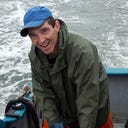

Discover more from A Campus Resident
Bronze disk being installed (and fireweed extra)
Musqueam artist Richard Campbell supervises installation of the bronze disk at the Reconciliation Pole
The wait is over. Musqueam artist Richard Campbell’s bronze cast disk arrived in four large boxes Wednesday, March 8, 2023.
I was able to talk with Richard Campbell (Artist) and Barbara Cole (Belkin Curator of Outdoor Art) Thursday morning (March 9, 2023) as I walked home from teaching. When I came upon them, the lids of the four boxes holding the bronze disk had been removed. The work crew was getting ready to ‘dry fit’ the disk to determine where the attachments needed to be placed.
I asked Richard and Barbara what it felt like to see this coming together.
“Pretty good,” Richard told me.
I noted the delay in transport must have been disappointing (a late February delivery had been interrupted when the transport driver fell ill). Barbara said words to the effect ‘patience is always important.’
I introduced myself to Richard. We shared pieces of our background (both having histories in the commercial fishery, we knew of some of the same people). Richard told me he had 44 years of carving. He found himself doing this work through his friend and neighbour, the late Rick Sparrow. Rick and Haida artist Jim Hart (the carver of the Reconciliation Pole) knew each other through the fishing industry. When Jim was looking for someone to create the disk their mutual friend put Richard and Jim in touch. This led to the collaboration in which Richard designed and carved (in high density foam) the disk now being installed on Main Mall.
Details on the formal installation and acknowledgement ceremony have not yet been released. It is anticipated sometime in the next few weeks.

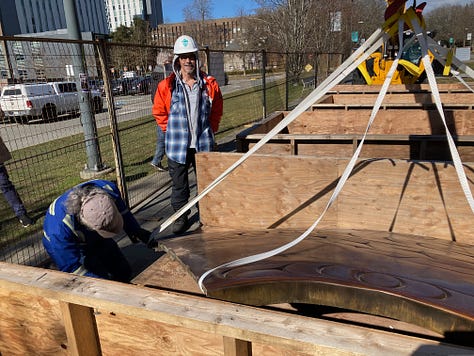
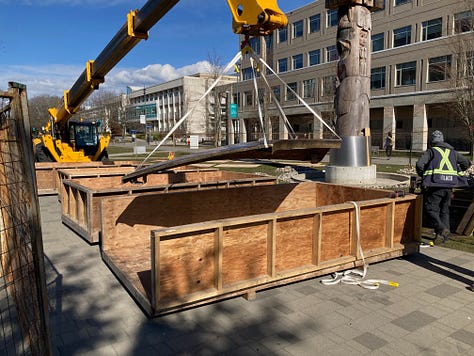
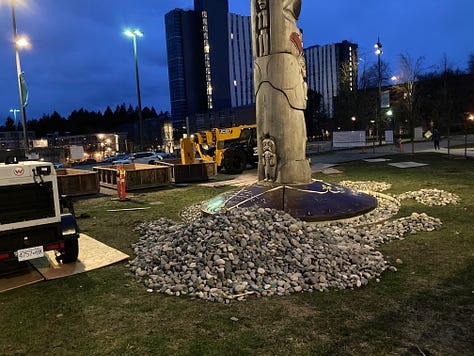
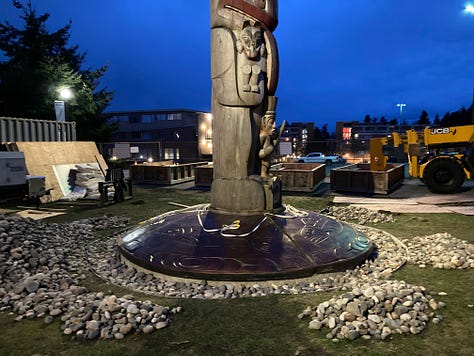
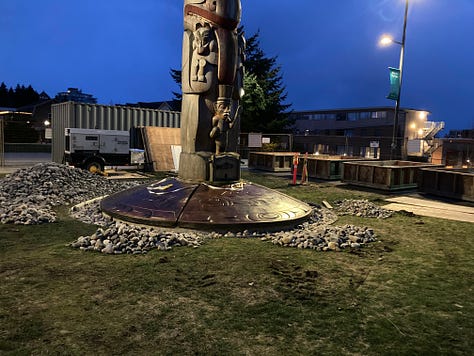
x̱ach’t (Fireweed) Extra
While watching the work with the bronze disk I asked Barbara about the x̱ach’t (fireweed) field installation at the other end of Main Mall, in front of the Belkin Gallery. This public art installation was approved and installed in the middle of the pandemic (spring/summer 2021). The concept was to plant a field of fireweed in place of a lawn in the front of the Belkin. For a number of reasons the fireweed never flourished and in its place was a unmowed grass field.
At the time the project was being planned I noted that UBC had placed a condition on the project that required all of the fireweed to be harvested before the seeds could mature and disperse. Apparently, they considered fireweed an ‘invasive’ and problematic plant.

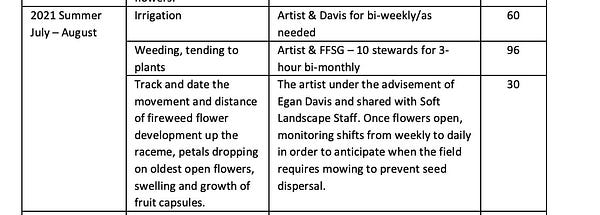
I shared my observations with Campus and Community Planning.
“I would note that there is an inherent contradiction in this project. It purports to draw upon Indigenous values through the planting of an Indigenous plant field but then the fireweed will be constrained by euro-centered horticultural practices (i.e. removing seed heads to prevent dispersal). If the field is a statement against colonial lawns, then the field should not be constrained by euro-centered horticultural practices” (email, March 28, 2021).”
I received the following reply:
“Thank you for the opportunity to respond to your comments and observations about the Fireweed Fields public art project. The meadow is intended to act as a catalyst for bringing people from many disciplines together to engage in a robust program of activity that addresses the climate emergency.”
“UBC staff deeply respects the project’s philosophy and looks forward to its physical manifestation. We believe it will enrich the experience of visiting both the gallery and Main Mall. However, staff also believes there is a need to balance natural succession strategies for the meadow with the practical implications related to seed spread from the fireweed plants to adjacent properties. We recognize there is an inherent contradiction in imposing constraints upon a field of indigenous plantings but with participation from representatives from the Belkin, Musqueam, horticultural, and landscape staff, the team intends to work together to support and integrate natural plant succession with the practical aspects of managing impacts” Karen Russell, March 29, 2021).
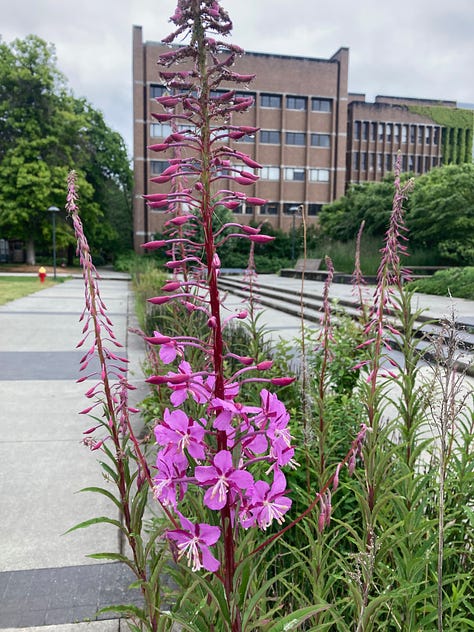
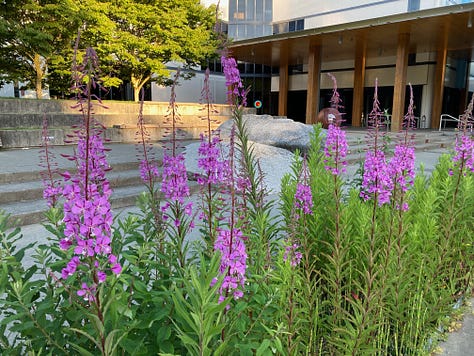
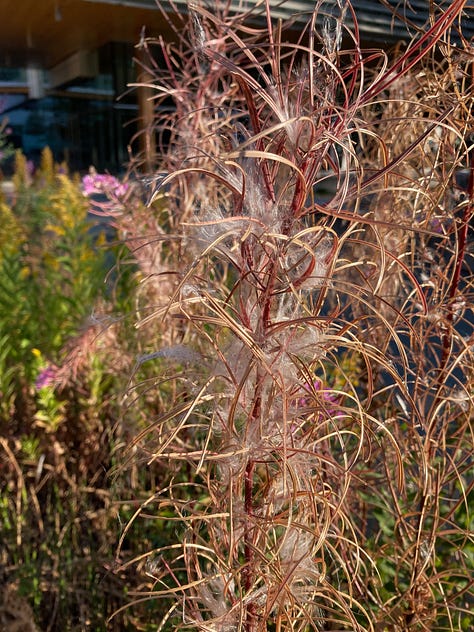
As we were observing the dry fitting of the bronze disk I asked Barbara if the Belkin was trying again with the fireweed field. I noted it hadn’t really done as hoped.
“The heat dome was hard on it,” Barbara said. The fireweed field never really took off she explained.
“We’re trying again,” Barbara said. “Cardboard was first laid down over the grass, then topsoil was spread over that. Then it was all seeded.”
I asked if the provision of picking the seeds before they disperse was still required.
“Yes,” Barbara told me.
Given the evolution in thinking over the past couple of year at UBC on Indigenizing landscapes and built structures and the coming agreement with Musqueam one wonders why fireweed still needs to be suppressed.




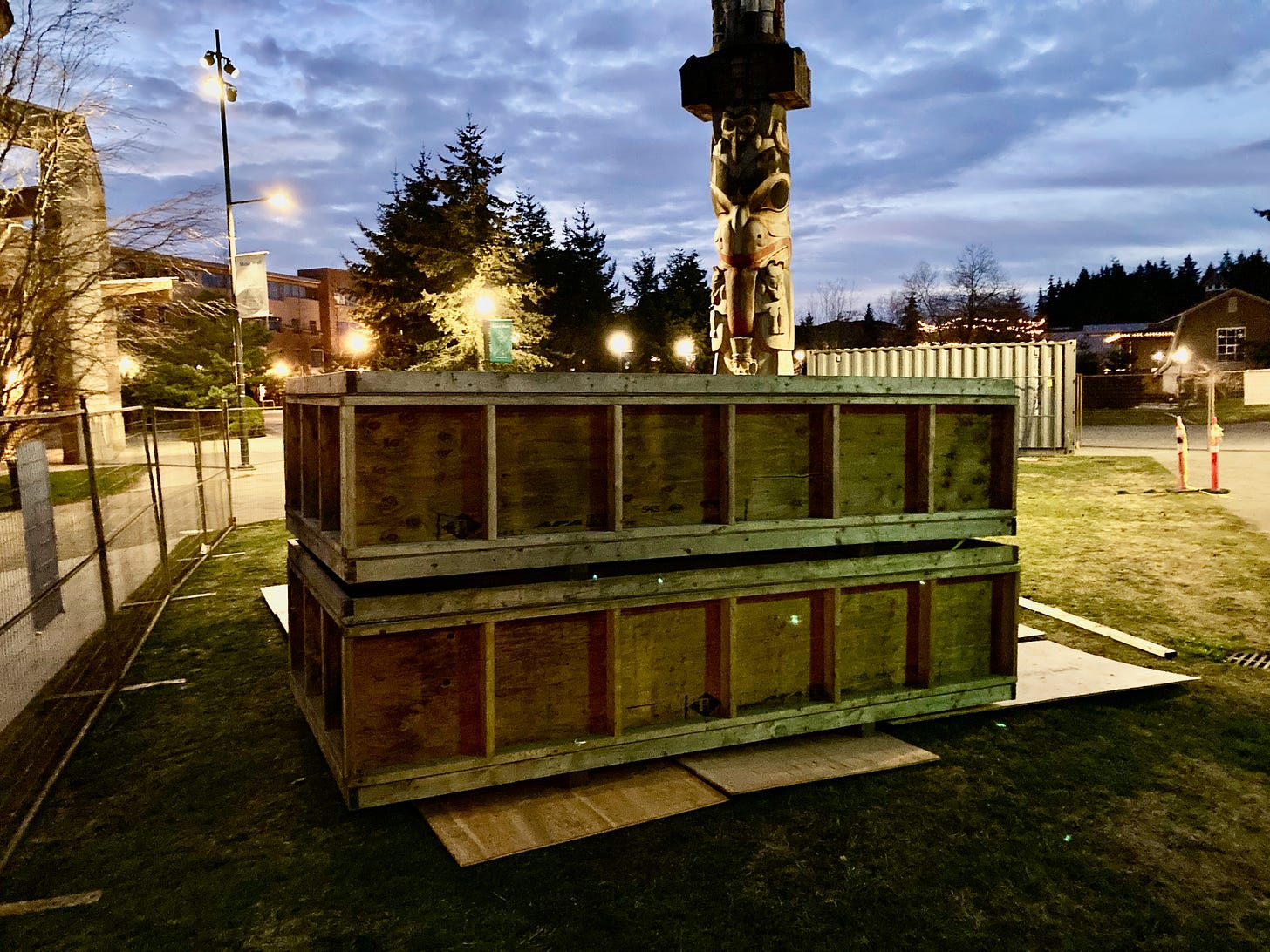
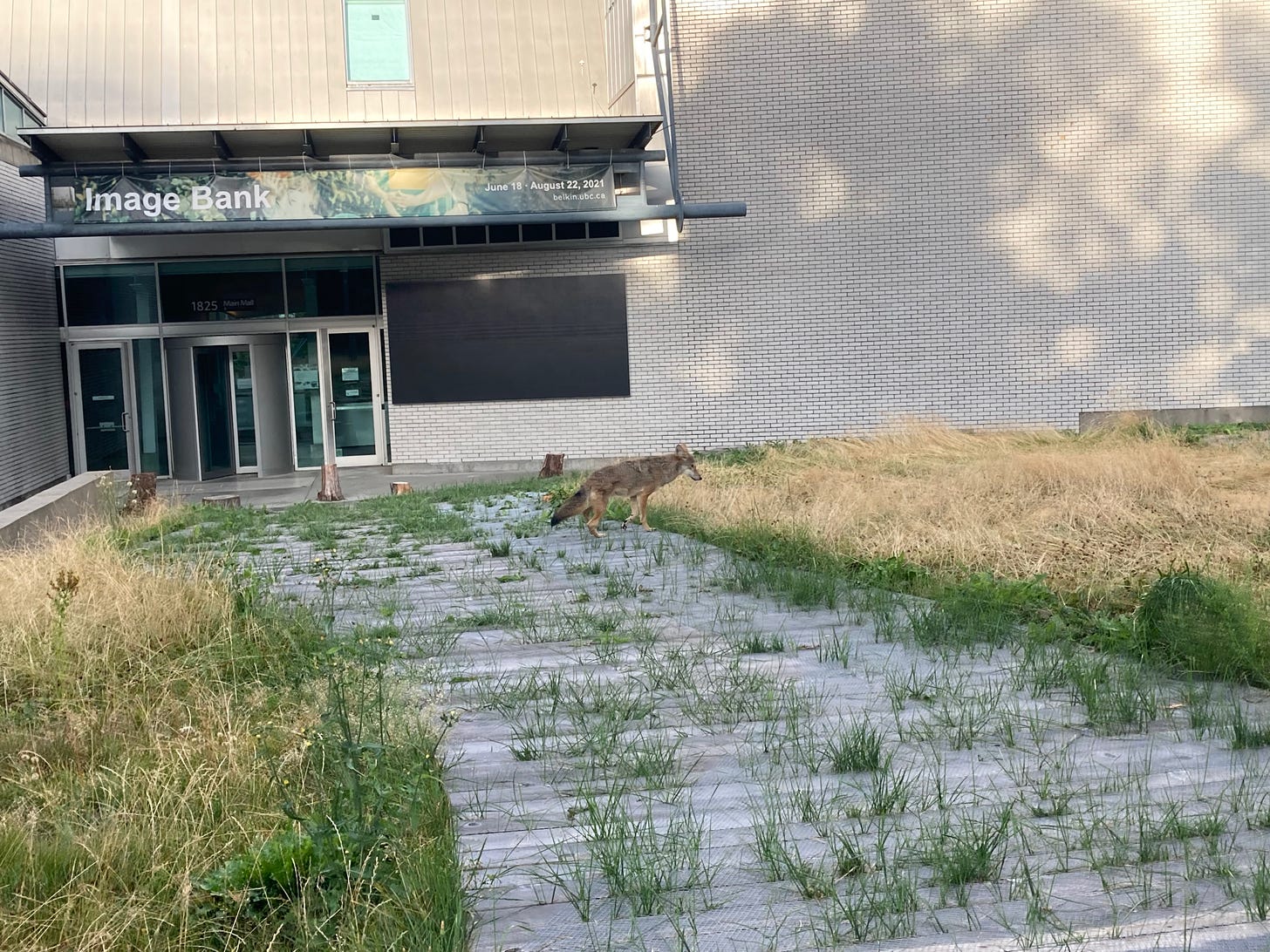
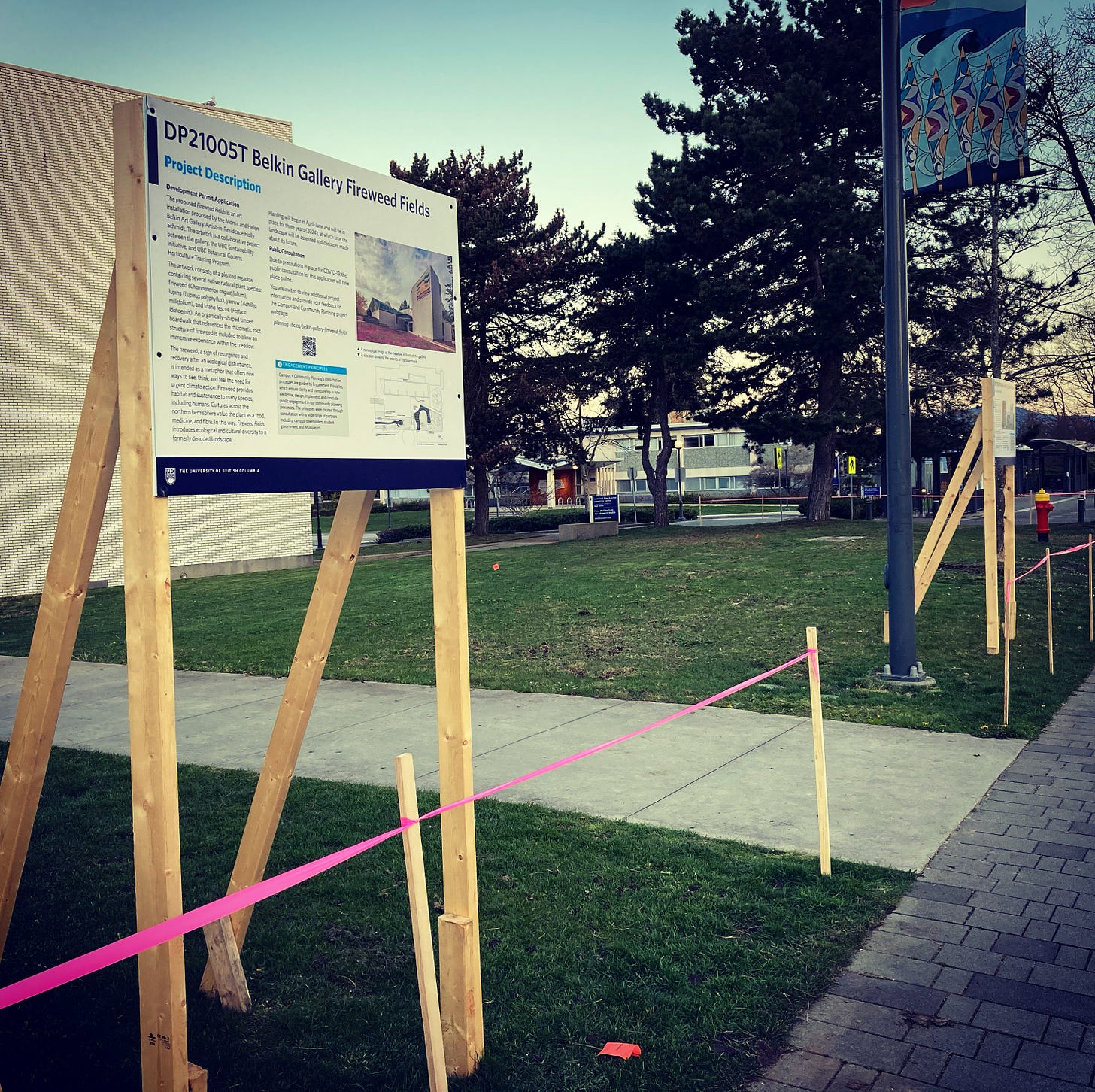
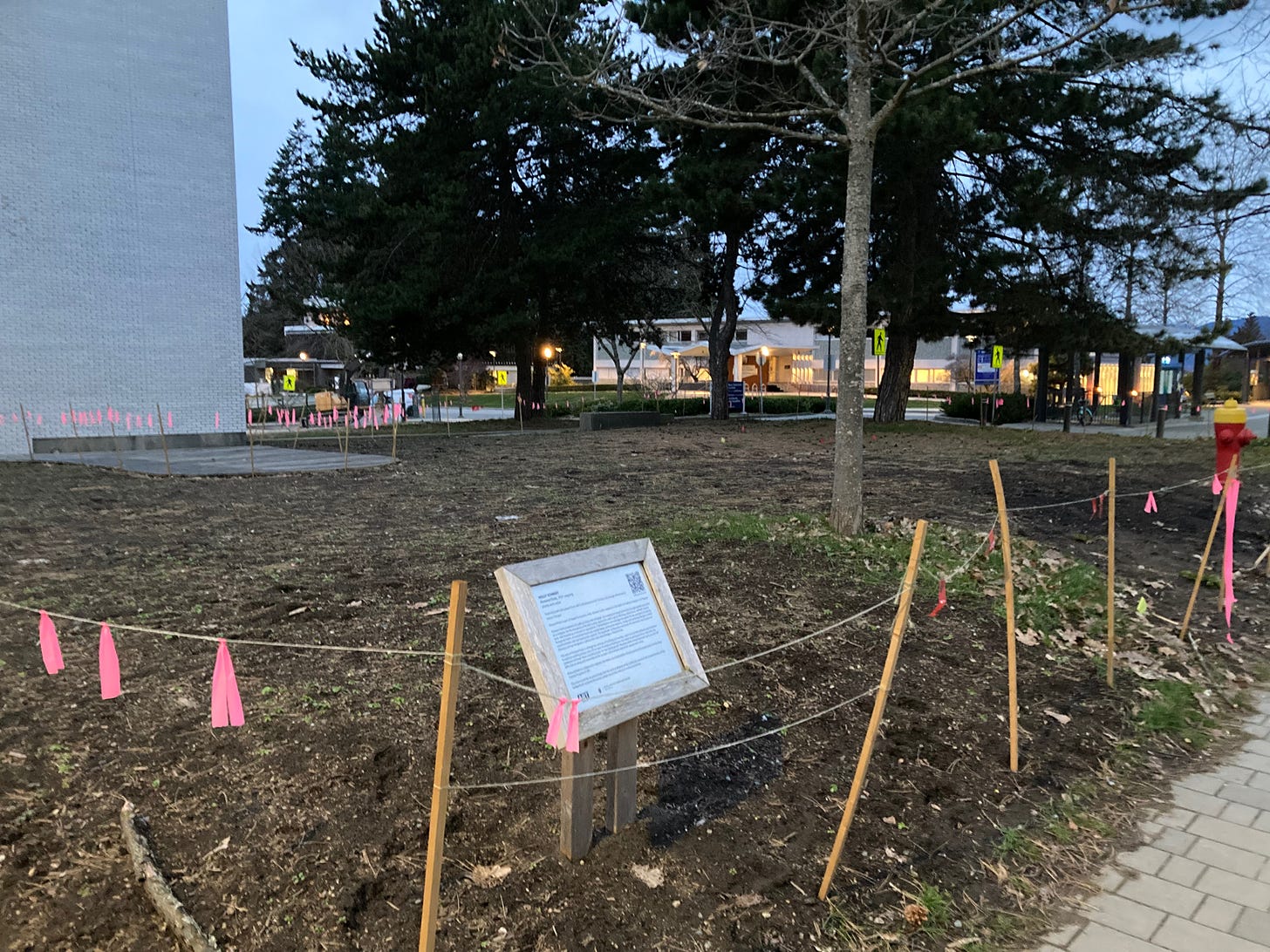







Thank you for the advance peek at what will be a fitting addition to a campus landmark that provides a reminder of a shameful part of BC settler history and the resilience of Indigenous peoples.
The situation with the fireweed is so revealing. I have a lot of respect for how you approach engagement with the UBC bureaucracy, and I think it's more than just your more extensive familiarity. I expect it's your culture informing a well considered strategy seeking equality. Much respect. As a masculine presenting white person I tend to only be dismissed once my beliefs become explicit. I have it easy. As always, I appreciate your work here. Thanks.